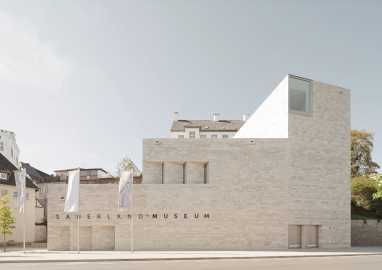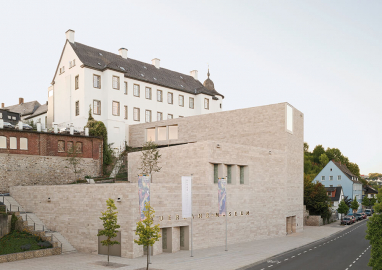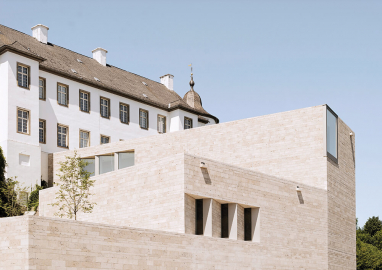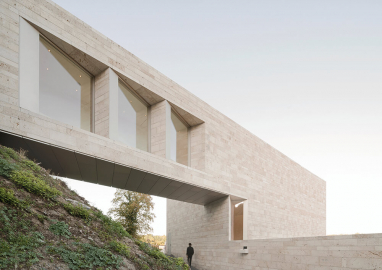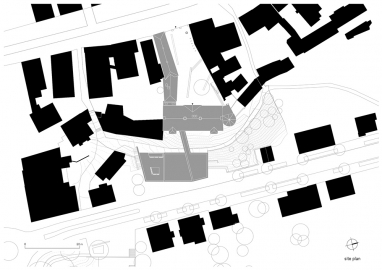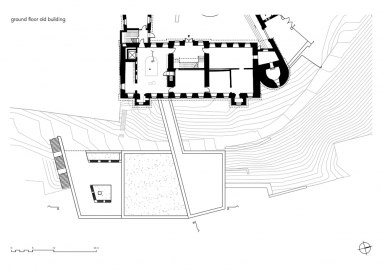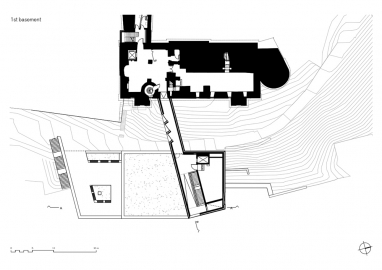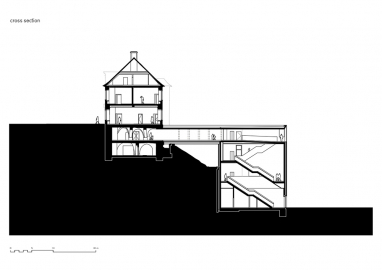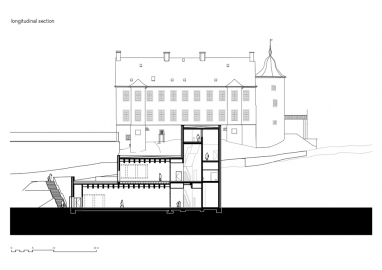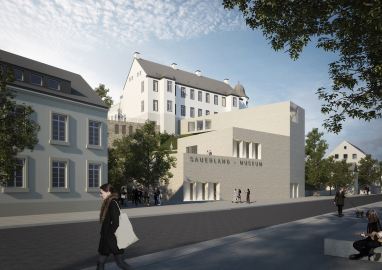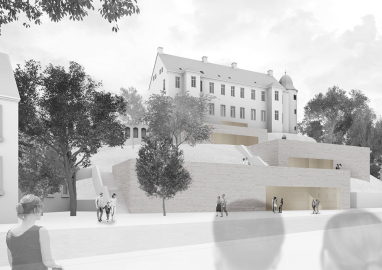Museum and Cultural Forum in Arnsberg
Careful Integration: The new museum is an architectural sign for the present that, despite its formal strangeness, has something engagingly familiar about it. The sculptural building is a new, public place in the old town of Arnsberg that has a strong national appeal.
The Sauerland-Museum, located in the historically listed Landsberger Hof, has been expanded to become Museum and Cultural Forum South Westphalia. To achieve this, the existing historical building from 1605 was extensively renovated in a first construction phase and the permanent exhibition was redesigned. Phase two comprised an extension building, located on the directly adjacent, 45-degree sloped lot which leads down to Ruhrstrasse and the Ruhr River. At the client’s request, the award-winning competition project of the year 2012, with its underground connection between the existing and new construction, had to be completely redesigned. The new design of the museum building is stepped like a grandstand from North to South in three stages: From the level of the first basement of the existing building down to the Ruhrstrasse, where the main building mass with the great exhibition hall is located. On the way down through the white stairwell to the Ruhrstrasse the volume increases itself storey-wise, from the upper level with the start of the exhibition to the mezzanine level multi purpose hall down to the grand exhibition hall.
The existing building connects to the extension by means of a bridge-like docking structure from the first basement of Landsberger Hof, accentuating this passage with three diagonally cut window openings towards Brückenplatz. The path leads straight to a full height, panoramic window, which opens up - from a height of 15 m - an impressive view of the city. An existing historical footpath on the hill below Landsberger Hof was preserved and now passes under the connecting bridge of the two building structures to a public panoramic terrace on the lower roof of the museum. The striking, staggered new building also serves as a mediating component of the city between Old Market in the West and the significantly lower Ruhrstrasse in the East. By adopting the two main angles of Landsberger Hof and Ruhrstrasse, the new construction blends in naturally in its built environment. At the same time, Landsberger Hof remains dominant in the silhouette of the old town. The homogeniously clad façade with travertine emphasizes the sculpturality of the new museum. Carefully incised, three dimensional window openings create an exciting relationship from the interior to the exterior space.
For the design of the Museum and Cultural Forum only natural materials were used. The natural stone (travertine) for the monolithic facade and the oak floorboards for the exhibition spaces are sustainable, handcrafted materials of a high durability. The massive construction and the few window openings ensure a high thermal inertia, which is insensitive to temperature fluctuations and meets very well the requirements of a museum building.
In addition, the dimensions of the air conditioning technology could be minimized by means of a room-specific simulation. The baroque Palais Landsberger Hof was energetically upgraded in line with the historical monument by installing insulated glazing and insulation against the roof space. The museum's heating requirements are met by an air-water heat pump.

